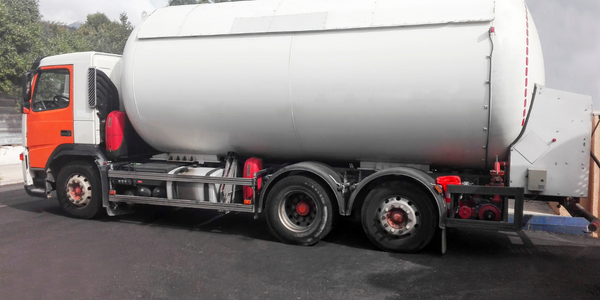Archdiocese finds safe haven from cybercrime with Bitdefender MDR
公司规模
Large Corporate
地区
- America
国家
- United States
产品
- GravityZone Ultra
- GravityZone Patch Management
- GravityZone HyperDetect
- Bitdefender Network Traffic Security Analytics
技术栈
- Citrix XenApp
- Citrix XenServer
- Microsoft Exchange
- VMware ESXi
实施规模
- Enterprise-wide Deployment
影响指标
- Cost Savings
- Customer Satisfaction
- Productivity Improvements
技术
- 网络安全和隐私 - 端点安全
- 网络安全和隐私 - 网络安全
- 网络安全和隐私 - 安全合规
适用功能
- 商业运营
用例
- 入侵检测系统
关于客户
The Archdiocese has a Catholic population of roughly half a million people with hundreds of parishes and schools. Employing several thousand employees, the Archdiocese and its agencies provide shelter, hospitalization, addiction services and child services regardless of religion, race or gender. The organization is headquartered in the United States and has a total of 4,500 employees, including 19 IT staff members. The Archdiocese's mission is to serve the community through various social services, making it a significant non-profit entity with a broad reach and impact.
挑战
When an Archdiocese began consolidating IT services across its various agencies and locations, its IT support organization transitioned from supporting several hundred to many thousands of employees. Senior leadership, with the assistance of outside IT committee members, determined that a managed detection and response solution would help reduce IT operational costs and deliver improved stability across the decentralized organization. After evaluating solutions from various managed security vendors including Bitdefender, Carbon Black and CrowdStrike, IT selected Bitdefender Managed Detection and Response (MDR) Service. Staffed by experienced security analysts, Bitdefender’s MDR Service provides the Archdiocese with 24X7 monitoring of in-depth telemetry to rapidly identify malicious activities, remove threats, reduce investigative time, and limit damage.
解决方案
The MDR Service uses the base of Bitdefender GravityZone Ultra, which provides the Archdiocese with endpoint protection, detection, and response capabilities across more than 5,000 endpoints. The Archdiocese’s endpoints include: Windows, Linux and macOS workstations; physical and virtual servers running VMware, Citrix, and an on-premises email solution. The Archdiocese’s MDR Service also incorporates GravityZone HD, which includes Sandbox Analyzer to analyze suspicious files, detonate payloads, and report malicious intent to administrators, and HyperDetect for tunable machine learning, advanced heuristics, and antiexploit techniques. Additional MDR Service modules selected by the Archdiocese include GravityZone Patch Management to automate patching and Bitdefender Network Traffic Security Analytics (NTSA) to detect network-based attacks in real time and automate alert triage for incident response.
运营影响
数量效益

Case Study missing?
Start adding your own!
Register with your work email and create a new case study profile for your business.
相关案例.

Case Study
Protecting a Stadium from Hazardous Materials Using IoT2cell's Mobility Platform
There was a need for higher security at the AT&T Stadium during the NFL draft. There was a need to ensure that nuclear radiation material was not smuggled inside the stadium. Hazmat materials could often be missed in a standard checkpoint when gaining entry into a stadium.

Case Study
Visual Management on Gas Tankers
Gas tankers are massive ships with a limited crew, making them extremely difficult to monitor. Video surveillance systems, which use a large number of widely distributed devices, and fire prevention systems are both crucial elements of a gas tanker monitoring system.The system used for this application is a legacy analog CCTV surveillance system that is completely independent from the main monitor and control SCADA system. With this system, the administrator responds to an event by first using the SCADA system to locate the event, and then accesses the appropriate surveillance camera from the CCTV system to view the location. The goal is to upgrade the system so that only one step is required. This is done by integrating the CCTV surveillance system into the SCADA system, in which case the surveillance system becomes a SCADA sub-system, making centralized control and monitoring possible.System Requirements- Upgrade to an IP video surveillance system for integration with the existing SCADA system- Live video display (through the SCADA system)- Enable events in the SCADA system to automatically trigger live video display- All the devices need to be of rugged design and have an anti-explosion defense

Case Study
Leveraging Graph Technology for Enhanced Cybersecurity: A Case Study on MITRE's CyGraph
MITRE, a federally-funded, not-for-profit company that manages seven national research and development laboratories in the United States, was grappling with the challenge of managing an influx of cybersecurity data. The constant changes in network environments were impacting the security posture of U.S. government agencies. Intrusion alerts, anti-virus warnings, and seemingly benign events like logins, service connections, and file share access were all potentially associated with adversary activity. The cybersecurity researchers at MITRE needed to go beyond rudimentary assessments of security posture and attack response. This required merging isolated data into higher-level knowledge of network-wide attack vulnerabilities and mission readiness. The challenge was not the lack of information, but the ability to assemble disparate pieces of information into an overall analytic picture for situational awareness, optimal courses of action, and maintaining mission readiness. The team also struggled with fully comprehending a given security environment and mapping all known vulnerabilities.

Case Study
EMC's Transition to SMS for Real-Time IT Alerts
EMC, a global leader in cloud computing, data storage, and data virtualization, was struggling with an inefficient and slow method of alerting its 68,000 employees about IT system updates. The traditional method involved drafting an email, proofing it, getting approval from several stakeholders, and finally sending it. This process was not only labor-intensive but also unreliable as it depended on the user's email being unaffected and the user actually opening and reading the email. After sending 1.2 million alert emails in a single month, EMC decided to find a more efficient and immediate way to alert employees. The challenge was to find a solution that was not only faster and less labor-intensive but also globally available and scalable to EMC's needs.

Case Study
Mitigating Cybersecurity Risks in Manufacturing: A Case Study of Jacobs Douwe Egberts
Jacobs Douwe Egberts (JDE), a global coffee and tea company, faced a significant challenge in the wake of a malware incident in 2017 that caused a computer outage across Mondelez’s global operations, resulting in losses of €100M. This incident served as a wake-up call for JDE to implement a robust cybersecurity program to protect its operational technology (OT), including the industrial control system (ICS) environment across its factories worldwide. The advent of Industry 4.0 has led to increased interconnectivity in manufacturing environments, making them more vulnerable to cyberattacks. Traditional IT security measures were no longer sufficient to protect JDE's manufacturing operations. The company needed a comprehensive overview of all cybersecurity risks and vulnerabilities across its factories, including all operational technology computing systems used to manage the entire industrial operation.

Case Study
Modernizing the Angolan Government Agency Voter ID Program with IoT
The Angolan government agency was seeking to upgrade its voter ID system ahead of the elections in Q3 2017. The aim was to increase the number of citizens eligible to vote by issuing voter IDs in a short time frame. The existing voter ID printing system needed to be replaced with a solution that reduced costs significantly by providing mobility and streamlining operational processes. The key selection criteria included a faster throughput secure issuance printer solution, a de-centralized secure issuance solution to increase the number of citizens enrolled, a Wi-Fi based secure issuance printing solution for increased convenience, improved reliability of the printing solution, a lightweight, easy-to-use portable solution for collecting citizens’ data and issuing voter IDs for citizens residing in remote areas, and high levels of security to combat fraud and minimize the number of counterfeit voter IDs.






